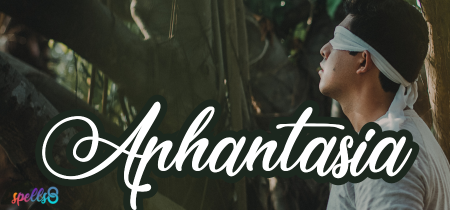
Visualization is central to many practices within witchcraft, paganism, and other spiritual practices. This involves the ability to see images in your mind’s eye. The practice of visualization includes cues to direct you, calling forth images, scenes, and other visual aspects to help you meditate, enter trance, or cast spells. However, not everyone has the ability to visualize! Those without the ability to visualize may have something called aphantasia.
Put simply, aphantasia is the inability to create mental imagery. The word was first coined in 2015 by a team of researchers at the University of Exeter. Aphantasia comes from the Greek word phantasia, meaning imagination, with the prefix a-, meaning without. In this sense, the word aphantasia denotes a lack of imagination. While that is not entirely the case, the word itself is a good representation of a lack of mental imagery.
Even though the word aphantasia wasn’t used until 2015, the phenomenon of a lack of mental imagery was first noted in the 1800s by a person named Francis Galton. In his experience, he spoke with other “men of science” and discovered that many of them had no clue what mental imagery was.
“To my astonishment, I found that the great majority of the men of science to whom I first applied, protested that mental imagery was unknown to them, and they looked on me as fanciful and fantastic in supposing that the words “mental imagery” really expressed what I believed everybody supposed them to mean. They had no more notion of its true nature than a colour-blind man who has not discerned his defect has of the nature of colour.”
Here’s a quick exercise you can do to determine if you have a visual mental imagery. Close your eyes and think about a pink elephant. What do you see? The image or the word?

A Witch With Aphantasia
So, if a witch is supposed to be able to visualize and see images in their mind, how does a witch work with visualization if they do not have this ability? A witch with aphantasia may feel like they are at a disadvantage. Every book, every guided meditation, and every spell that a witch may learn from or rely on only ever teaches methods that require visualization as a skill. Alternative methods of visualization are rarely explored because a mental image and the mind’s eye are assumed to be the norm. However, as any witch with aphantasia is aware, it is not!
Someone with aphantasia cannot see an image in their mind. However, they can still think! I relate this entire experience to being blind. When a person is visually impaired, their other senses are often heightened to make up for their lack of vision. We can apply the same concept to our visualization ability. We can call on our taste, touch, hearing, smell, and emotions when we need to visualize. Rather than seeing an ocean in your mind, you can instead recall the way you feel standing on the shore or the way the air smells when tinged with salt.

There are plenty of methods you can use if you have aphantasia. Imagery-based visualization is not the only way one can work magic or meditate. Rather than working against the concept of mental imagery in your practice, it is beneficial to work with what you have. In this case, figure out the way your mind works and do more of that!
Mental Imagery Alternatives
As I said above, there are many methods of visualization that do not require a mental image. Below, I have gathered a few methods that may help you in your spiritual practice!
Meditating with Aphantasia
Many people with aphantasia find guided meditations to be confusing and frustrating. After all, if the instructions tell you to close your eyes and visualize something when you lack the ability, you will be less likely to continue with the practice. Rather than follow a guided meditation, you may find more success with mantra meditation, binaural beats, or other sounds.
Spellwork with Aphantasia
The purpose of casting a spell is to bring a change to your world, either physically or mentally. Many spells ask the witch to visualize their goal in great detail, seeing in their mind what they want to happen. When you have aphantasia, you have to adapt! Rather than seeing your goal, you can instead embody the way you will feel when your goal happens. You can also describe what you want to happen in great detail, utilizing your words rather than your mind. Simply put, you can verbally tell your spell what you want it to accomplish!
It is also possible to cast spells completely without visualization! Different practices such as sigil magick, chants, and herbal spells use little, if any, visualization. Remember, you are learning to work with your abilities - there is nothing wrong with tailoring your practice to suit you!
Affirmations with Aphantasia
Similar to spellwork with aphantasia, you can utilize affirmations in your practice. This does not require visualization at all - the purpose of an affirmation is to train the brain to think or act in a specific way. For instance, if you are casting a spell for self-love and you want to include affirmations, you will repeat phrases such as “I am loved,” or “I embrace and love myself for who I am.” These phrases do not require you to have a mental image. Instead, they focus on the way you feel – or want to feel – when you say them.
Your turn!
Though aphantasia is thought to affect less than 5% of the population, it is more commonly known among magickal people. After all, we tend to consciously work more with visualization and our mind than most other people. If you have aphantasia, what are some of your tips for others? Have you tried any of the above methods? Let us know what has worked for you!
You can find more conversations about aphantasia and visualization in the conversations below.




